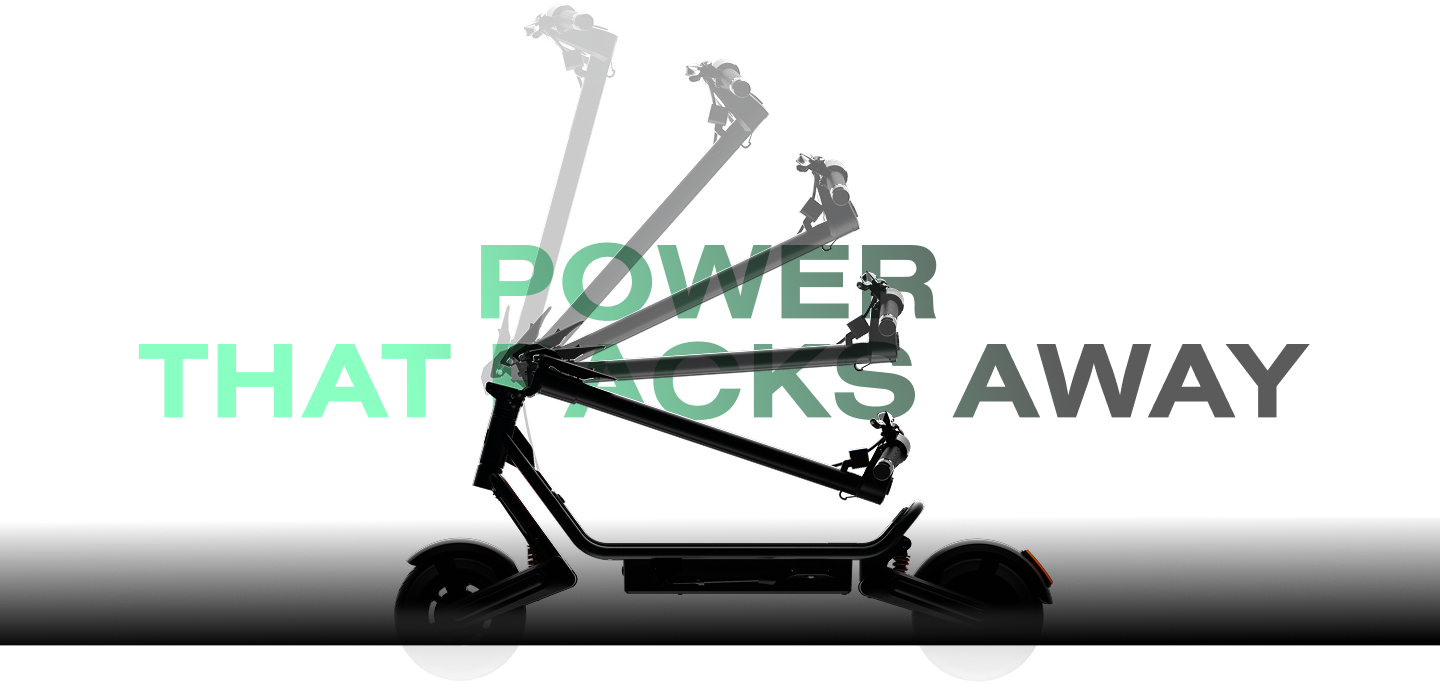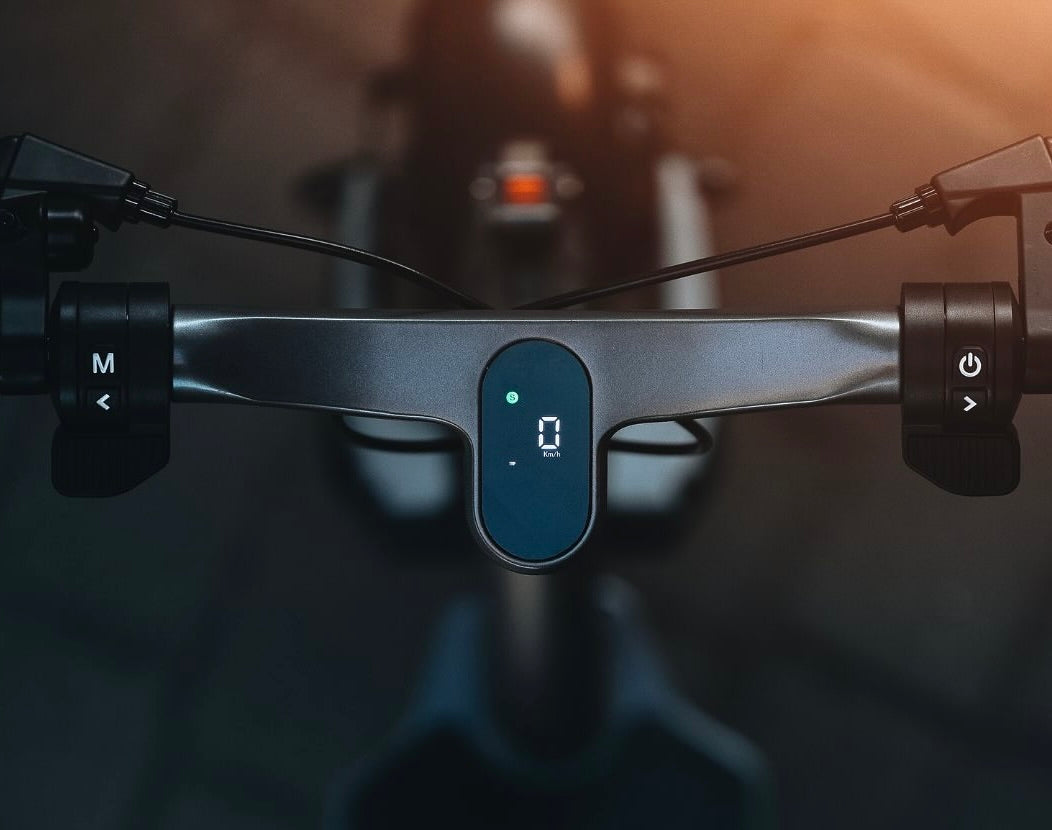If you’ve landed here, chances are you’re in one of three camps:
-
Shopping for your very first electric scooter (exciting!).
-
Just got your first ride and thinking, “Wait… this doesn’t feel like the one I saw zooming up hills on YouTube.”
-
Ready to upgrade to something more powerful but suddenly feel like you need an engineering degree to decode the specs.
Sound familiar? Don’t worry, we’ve got you. We're here to break down electric scooter specs in a way that actually makes sense. No jargon, no guesswork, just the good stuff to help you ride smarter.
Let’s get you from confused to confident. Let’s get you to Pro status. Ready? Let’s roll! 🛴⚡
What Do Electric Scooter Specs Really Mean?
Buying an electric scooter, whether it's a commuter electric scooter or a performance electric scooter, can feel overwhelming when spec sheets throw around terms like wattage, watt-hours, peak power, IP ratings, weights, and so many more things. Knowing what each one of them means and understanding how brands are getting these numbers is important to find the right fit, but most importantly the one that will bring the best value for you.
Breaking Down the Top 7 Electric Scooter Specifications
1. Motor Power and Wattage: How It Impacts Performance
If you've ever browsed electric scooter specs, you've probably noticed motor power listed in watts, but what you might not realize is that not all wattage is the same. Terms like nominal and peak power show up often, but they’re rarely explained clearly.
What Is Nominal Motor Power?
Nominal power refers to the continuous amount of power a motor can produce over an extended period of time without overheating or sustaining damage. Think of it as the scooter's “cruising” power, the reliable performance you can expect under normal conditions.
It’s a more accurate reflection of your day-to-day riding experience. If you’re commuting, cruising through bike lanes, or riding on relatively flat terrain, nominal power is what you’ll feel most of the time.
What Is Peak Motor Power?
Peak power, on the other hand, is the maximum output your scooter’s motor can deliver in short bursts, usually during:
-
Rapid acceleration
-
Climbing steep hills
-
Carrying heavy loads
-
Overcoming initial inertia from a stop
This power level can’t be sustained for long (typically just a few seconds), but it’s what gives you that extra kick when you need it most.
Real-World Example: Apollo City
Take the Apollo City as an example. It’s equipped with dual 500W nominal motors, giving it consistent, efficient performance for urban commuting. But when you need a little more power — like tackling a 25° incline or speeding up from a stop — the motors can reach up to 1000W × 2 peak power. That’s how it achieves top speeds of around 32 mph (52 km/h).
What to Watch for When Shopping
Here’s the tricky part: many scooter brands don’t specify whether their motor power rating is nominal or peak. And since peak power numbers are bigger, they’re often used in marketing to make a scooter sound more powerful than it really is.
If you see a scooter advertised with “1000W motor” but no mention of whether that’s peak or nominal — assume it’s peak.
Always check the fine print or ask the brand directly. Understanding this difference could save you from ending up with a scooter that looks powerful on paper, but struggles in real-world conditions.
2. Understanding Range and Battery Life
When it comes to choosing the right electric scooter, range is one of the most important specs out there. You’ll see numbers that sound amazing, but the reality? It’s not always so straightforward.
Let’s break it down so you know exactly what to look for and what to expect when it comes to battery performance.
The Basics: Battery Specs 101
Electric scooter battery specs are usually shown in:
-
Watt-hours (Wh) — the total amount of energy stored
-
Amp-hours (Ah) — the battery’s capacity
-
Voltage (V) — the battery’s potential power
In simple terms, the higher the Wh, the more energy the scooter can hold, and usually, the longer the range.
For example, the Apollo Phantom 2.0 Stellar has a 60V 30Ah battery, which translates to 1,800Wh (1.8kWh). That gives riders up to ~56 miles in Eco Mode — but let’s talk about what that really means.

Real-World Riding vs. Perfect-World Claims
Most scooter brands advertise maximum possible range, and while that’s great for showing off potential, it doesn’t always reflect real life. Those max range numbers are usually based on ideal conditions, like:
-
Flat roads
-
No wind resistance
-
A light rider
-
Low speeds (usually Eco Mode)
In reality, factors like rider weight, speed, hills, and weather can reduce range significantly — sometimes by 30–50%.
So if you’ve ever bought a scooter and wondered why you weren’t hitting the advertised range, you’re not alone.
What Apollo Is Doing Differently
At Apollo, we’ve heard the frustration, and we get it. That’s why we now display range estimates by riding mode (Eco, Normal, Sport), so you can better understand what your scooter will deliver in different scenarios.
We still use an average rider weight when testing, but this layered approach gives you a more realistic picture of what to expect on your rides.
So What Should You Look For?
When choosing your next scooter, pay close attention to battery size — it’s one of the best indicators of range.
-
Bigger battery = more range
-
If long range is your top priority, go for the largest battery you can afford
-
Remember: Bigger batteries are usually found in higher-performance scooters, but you can always ride in Eco mode to extend your range. If your scooter doesn’t offer this - then try to stay at a consistent speed, somewhere between 15 km/h (9 mph) & 25 km/h (15 mph) and avoid fast accelerations.
Don’t Forget the Other Variables
Even with a large battery, your actual range will be affected by:
-
Rider weight
-
Terrain and incline
-
Speed
-
Weather and wind
-
Stop-and-go vs cruising
To be safe, assume you’ll get about 70% of the advertised range under average riding conditions, unless the brand breaks it down clearly.
Even so, range is affected by rider weight, speed, terrain—real-world results often fall 30–50% below advertised estimates. Learn more here.
3. Weight Limits and Scooter Frame Design
When it comes to electric scooters, weight isn’t just a number—it’s a key part of your day-to-day experience.
Performance models like the Apollo Phantom Stellar weigh around 107 lbs, delivering power and stability, but at the cost of portability. On the other hand, commuter-friendly models like the Apollo City weigh closer to 65 lbs, making them much easier to carry and store.
So, is weight really that important?
Well, it depends. If you’ve got a garage or an elevator, probably not. But if you live in an apartment and need to carry your scooter up and down stairs, the difference between 65 and 107 lbs is going to feel huge. Add to that the fact that scooters have an awkward shape—long, bulky, and not exactly ergonomic—and suddenly every pound counts.
Don't Forget Load Capacity
Another factor often overlooked is the maximum load a scooter can carry. This includes your weight plus anything you’re bringing with you—like a backpack, groceries, or gear.
While scooters can usually handle a bit more than their listed limit, pushing past it can reduce performance, drain your battery faster, and even lead to wear or damage over time. It’s best to stay within the recommended load range if you want your scooter to last (and run at peak performance).
4. Suspension, Tires, and Ride Comfort Specs: What You Feel, Every Ride
Ride comfort isn’t just a luxury—it’s something you’ll feel every minute you spend on your scooter, especially on daily commutes. A solid suspension system helps absorb bumps and shocks, making for a much smoother experience on uneven roads or cracked pavement.
Apollo City, for example, features a dual spring suspension combined with 10-inch self-sealing tires. This combo allows it to glide over potholes and city imperfections with ease. Higher-end models like the Phantom Stellar take it a step further, offering advanced suspension systems built for longer distances and even off-road conditions.

How to choose the type of suspension on your scooter:
If you're new to electric scooters and planning to use yours mostly for commuting, stick to a non-adjustable suspension—like spring or rubber. It’s more than enough for daily city riding, especially if you’re just getting started. Not because you can’t handle something more advanced, but because it’s important to get a feel for your riding style first. Chances are, you won’t need anything more complex—so no need to overthink it.
That said, if you’re the kind of rider who loves dialing in every detail, exploring off-road trails, or chasing performance, go for something adjustable. Our Phantom Stellar, for example, features a DNM suspension system that lets you fine-tune your ride to perfection.
How about the type of tire?
Electric scooter tires are more important than you may think. Solid tires offer the worst riding experience. Unless you’re very short on budget, we recommend that you go for pneumatic (air-filled) tires that tend to offer a softer ride. Now if you want something even better, self-sealing (or self-healing) tires are designed to withstand minor punctures—ideal for city riders who don’t want to worry about flats. All these factors work together to determine how smooth (or bumpy) your everyday ride will be.
5. Smart Features and IP Ratings: The Underrated MVPs of Modern Scooters
Electric scooters have come a long way in recent years—not just in speed and range, but in smart features that genuinely improve your riding experience.
From app-based customization to regenerative braking controls and over-the-air (OTA) firmware updates, modern scooters are becoming more like smart devices on wheels. For instance, Apollo scooters allow you to fine-tune acceleration strength, regen braking intensity, and even lighting preferences—all from your phone.
Another key feature that often gets overlooked is water resistance, measured by an IP (Ingress Protection) rating. Most Apollo models offer IP54 to IP66 ratings, meaning they can handle rain, puddles, and everyday splashes. Apollo Go, for example, boasts an impressive IP66 rating, making it one of the best options for rainy climates or unpredictable weather. If you plan to ride year-round, this spec is absolutely worth checking.
Our recommendation - download the app of the scooter brand you’re looking for, navigate around it and test it out to see how you like it.
6. Scooter Weight vs Portability: Striking the Right Balance
Scooter weight can be a make-or-break factor depending on your lifestyle. Heavier scooters often mean more power and longer range—great for long commutes or weekend adventures. But if your daily routine involves carrying your scooter up stairs, lifting it into a car trunk, or navigating public transit, portability becomes key.
Commuter-friendly models like the Apollo City weigh around 65 lbs, making them relatively easy to fold and carry for short distances. On the other hand, high-performance models like the Phantom Stellar weigh in at approximately 107 lbs—not something you want to carry up three flights of stairs every day.
So what should you prioritize? Think about your space: do you have an elevator or garage? Go heavier. Need to carry it upstairs or store it in a small apartment? Look for something lighter. Keep in mind: scooters aren’t shaped like a suitcase—they’re long, bulky, and can be awkward to carry, especially in tight spaces.
7. How to Compare Specs When Shopping: Make the Smart Choice, Not the Flashy One
When you're in the market for an electric scooter, it's easy to get caught up in flashy marketing claims or impressive top speeds. But a smarter approach is to dig into the specs—and compare them side by side.
Most brands (including Apollo) offer spec comparison tools on their websites to help you assess the numbers that matter: top speed, range, motor power, weight, suspension type, tire size, and IP rating. Comparing models this way ensures you’re picking a scooter that fits your specific needs—whether that's urban commuting, long-distance riding, or weekend joyrides.
Also, don’t just go for the model with the highest numbers. Ask yourself: how much range do I actually need? Will I use the extra speed? What’s the terrain like where I live? Answering these questions before checking out will save you from overspending—or worse, underbuying.
Answering Real Buyer Questions
What are the most important specs for an electric scooter?
Focus on battery capacity (Wh), motor power, range, suspension, and IP rating—especially for a reliable commuter scooter.
How much power does a good electric scooter need?
Nominal power of ~500 W (per motor) is good for most riders that need their scooter for commuting. Higher wattage (1200 W+) offers quick acceleration and strong hill performance seen in the Phantom series.
What is a good range for a commuter scooter?
For daily commuting, ~500–700 Wh gives ~15–25 miles. If terrain or speed are higher, aim for 800–1200 Wh with a buffer for real-world conditions. When thinking about range, consider the total range you’ll need before charging. This could mean one way only if you’re able to re-charge your battery at your office.
What does IP rating mean for electric scooters?
An IP54 rating protects against splashes; IP66 ensures protection in heavy rain. High ratings (like IP66 on Apollo Go) mean riding in damp weather is safer.
Final Tips: Master the Spec Sheet
-
Read battery Wh before range claims—Wh is better predictor than mileage alone.
-
Check both peak vs nominal motor power.
-
Consider frame weight based on your storage and travel needs.
-
Look for suspension type and tire specifications to understand ride comfort.
-
Ensure IP rating matches your typical weather conditions.
-
Use tools like Apollo’s Compare Tool for side-by-side spec evaluation.
Further Reading
-
Learn more about navigating scooter range with real-world insights in How Far Can an Electric Scooter Really Go?
-
Discover key performance features and what sets Apollo scooters apart in Discovering the Top Features of Apollo Electric Scooters
By learning to read electric scooter specs like a pro, you can choose the model that delivers the best power, comfort, and real‑world performance for your needs—without getting lost in technical jargon.
👉 Ready to make the right pick? Head over to our Compare Electric Scooters tool and start comparing today.







